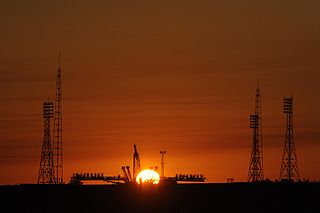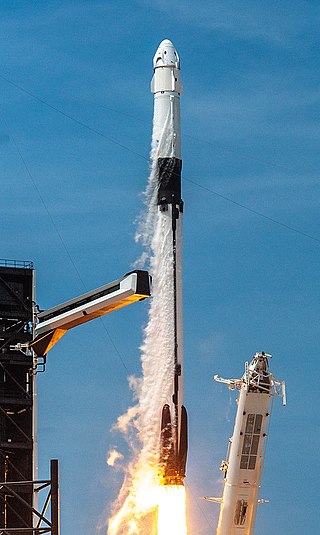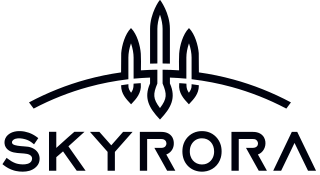Divisions
Space Concordia is organised in four divisions: Robotics, Rocketry, Spacecraft and Space Health. [4]

Space Concordia, commonly referred to as SC, is a student organisation at Concordia University in Montreal, Canada, [1] dedicated to the development of space technology and teaching students about space related sciences.
Over 150 members are organized in four divisions. [2]
Space Concordia's Rocketry division is currently[ timeframe? ] competing in the Base 11 Space Challenge, developing a liquid fuelled rocket with the goal to cross the Kármán line. [3] [4]
The development and most of the manufacturing is done in-house by students, including the construction of the mobile engine test stand Trailer Tom. [4]
Space Concordia was founded in 2010 by assistant professor Scott Gleason at Concordia University with the purpose of competing in the Canadian Satellite Design Challenge (CSDC). [5] [6] The team had less than ten members then. Their entry in the competition, the satellite Consat-1, won first place. [7] The team working on satellites became later the Spacecraft division of Space Concordia.
In 2012 Rocketry and Robotics divisions were founded. Robotics builds rovers and Rocketry is dedicated to the construction of rockets.
Rocketry division's first rocket ever, Arcturus, was awarded 2nd place in the payload category of the 10th Intercollegiate Rocket Engineering Competition (IREC) in 2015. [8] [9] The solid rocket reached a height of 12,705 ft (3,872 m).
In 2016, Space Concordia won 2nd place in the basic category of the 11th IREC. [10]
In 2018, the rocket Supersonice reached a height of 30,000 ft (9,100 m) and a top speed of mach 1.8. Space Concordia's first supersonic rocket won first place in the Spaceport America Cup. [11]
Later in 2018, Rocketry started development of a liquid fuelled rocket to compete in the Base 11 Space Challenge. Space Concordia won second place in the design phase and first place in the Critical Design Review (CDR). [12] [1]
On June 18 2021, they successfully completed a hot-fire test of the engine. Space Concordia fired the most powerful liquid fuelled student rocket engine, producing an average thrust of 35 kN at ground level. [13]
Space Concordia is organised in four divisions: Robotics, Rocketry, Spacecraft and Space Health. [4]

Space Concordia Rocketry Division, commonly abbreviated as SCRD, focuses on the design, development and testing of liquid rockets.
Since 2018 Space Concordia Rocketry Division has been developing a liquid rocket known as "StarSailor". This rocket is designed to fly to the Kármán line. The rocket is powered a pressure-fed Kerosene-Liquid Oxygen rocket which currently holds the Canadian record for highest thrust produced by amateur rocketry teams in Canada.
Space Concordia’s club room, commonly referred to as 'Space Lab', is located on the 9th floor of the Henry F. Hall Building on Concordia’s downtown campus.[ citation needed ]
Space Concordia’s members have also access to the 'Cage', an area in the basement of the Henry F. Hall Building, used by different clubs and capstone students. [14] The Cage is used for manufacturing, and storing equipment and parts.
Concordia’s Engineering Design and Manufacturing Lab (EDML) is used by members to manufacture parts that require machining. The EDML is also located in the basement of the Henry F. Hall Building. It is supervised by university staff members, who also assist and train students. The lab is equipped with manual drills, mills, lathes and a welding area. [15]
Spacecraft Division
Rocketry Division
Space Concordia has built and launched four rockets so far. [8]

A hybrid-propellant rocket is a rocket with a rocket motor that uses rocket propellants in two different phases: one solid and the other either gas or liquid. The hybrid rocket concept can be traced back to the early 1930s.

Spaceflight is an application of astronautics to fly objects, usually spacecraft, into or through outer space, either with or without humans on board. Most spaceflight is uncrewed and conducted mainly with spacecraft such as satellites in orbit around Earth, but also includes space probes for flights beyond Earth orbit. Such spaceflight operate either by telerobotic or autonomous control. The more complex human spaceflight has been pursued soon after the first orbital satellites and has reached the Moon and permanent human presence in space around Earth, particularly with the use of space stations. Human spaceflight programs include the Soyuz, Shenzhou, the past Apollo Moon landing and the Space Shuttle programs. Other current spaceflight are conducted to the International Space Station and to China's Tiangong Space Station.

A spaceport or cosmodrome is a site for launching or receiving spacecraft, by analogy to a seaport for ships or an airport for aircraft. The word spaceport, and even more so cosmodrome, has traditionally been used for sites capable of launching spacecraft into orbit around Earth or on interplanetary trajectories. However, rocket launch sites for purely sub-orbital flights are sometimes called spaceports, as in recent years new and proposed sites for suborbital human flights have been frequently referred to or named "spaceports". Space stations and proposed future bases on the Moon are sometimes called spaceports, in particular if intended as a base for further journeys.

The Guiana Space Centre, also called Europe's Spaceport, is a European spaceport to the northwest of Kourou in French Guiana, a region of France in South America. Kourou is located approximately 310 mi (500 km) north of the equator at a latitude of 5°. In operation since 1968, it is a suitable location for a spaceport because of its equatorial location and open sea to the east.

A sounding rocket or rocketsonde, sometimes called a research rocket or a suborbital rocket, is an instrument-carrying rocket designed to take measurements and perform scientific experiments during its sub-orbital flight. The rockets are used to launch instruments from 48 to 145 km above the surface of the Earth, the altitude generally between weather balloons and satellites; the maximum altitude for balloons is about 40 km and the minimum for satellites is approximately 121 km. Certain sounding rockets have an apogee between 1,000 and 1,500 km, such as the Black Brant X and XII, which is the maximum apogee of their class. Sounding rockets often use military surplus rocket motors. NASA routinely flies the Terrier Mk 70 boosted Improved Orion, lifting 270–450-kg (600–1,000-pound) payloads into the exoatmospheric region between 97 and 201 km.

Georg Arthur Constantin Friedrich Zander, was a Baltic German pioneer of rocketry and spaceflight in the Russian Empire and the Soviet Union. He designed the first liquid-fueled rocket to be launched in the Soviet Union, GIRD-X, and made many important theoretical contributions to the road to space.

Geosynchronous Satellite Launch Vehicle (GSLV) is a class of expendable launch systems operated by the Indian Space Research Organisation (ISRO). GSLV has been used in fifteen launches since 2001.
Amateur rocketry, sometimes known as experimental rocketry or amateur experimental rocketry, is a hobby in which participants experiment with fuels and make their own rocket motors, launching a wide variety of types and sizes of rockets. Amateur rocketeers have been responsible for significant research into hybrid rocket motors, and have built and flown a variety of solid, liquid, and hybrid propellant motors.

This is a timeline of first orbital launches by country. While a number of countries, incl. Canada, Australia, Germany, Brazil, Algeria, Kazakhstan, Turkey, Argentina, Italy, Malaysia, Poland, South Africa, the Philippines, Egypt, Spain, Mexico, Thailand and Chile, have built or launched satellites, as of 2022, eleven countries, incl. the United States, Japan, China, India, Iran, Israel, France, the United Kingdom and South Korea, have had the capability to send objects into orbit with their own launch vehicles. Russia and Ukraine inherited the capability of the space launchers and satellites from the Soviet Union, following its dissolution in 1991. Russia launches its rockets from its own and foreign (Kazakh) spaceports.

Spaceport America, formerly the Southwest Regional Spaceport, is an FAA-licensed spaceport located on 18,000 acres (7,300 ha) of State Trust Land in the Jornada del Muerto desert basin 45 miles (72 km) north of Las Cruces, New Mexico, and 20 miles (32 km) southeast of Truth or Consequences. With Virgin Galactic's launch of the VSS Unity, with three people aboard, on May 22, 2021, New Mexico became the third US state to launch humans into space after California and Florida.
The British space programme is the British government's work to develop British space capabilities. The objectives of the current civil programme are to "win sustainable economic growth, secure new scientific knowledge and provide benefits to all citizens."

This article lists all active and upcoming orbital launch systems. For retired launch vehicles, see Comparison of retired orbital launch systems.

Rocket Lab USA, Inc. is a publicly traded aerospace manufacturer and launch service provider that operates and launches lightweight Electron orbital rockets used to provide dedicated launch services for small satellites as well as a suborbital variant of Electron called HASTE. The company plans to build a larger Neutron rocket as early as 2025. Electron rockets have launched to orbit 46 times from either Rocket Lab's Launch Complex 1 in New Zealand or at the Mid-Atlantic Regional Spaceport in Wallops Island, Virginia, United States. Rocket Lab has launched one sub-orbital HASTE rocket to date from Wallops Island, Virginia. In addition to the Electron, Neutron, and HASTE launch vehicles, Rocket Lab manufactures and operates spacecraft and is a supplier of satellite components including star trackers, reaction wheels, solar cells and arrays, satellite radios, separation systems, as well as flight and ground software.

The NASA Launch Services Program (LSP) is responsible for procurement of launch services for NASA uncrewed missions and oversight of launch integration and launch preparation activity, providing added quality and mission assurance to meet program objectives. LSP operates under the NASA Space Operations Mission Directorate (SOMD).

Thomas John Mueller is an American aerospace engineer and rocket engine designer. He was employee No.1 of SpaceX and is the founder and now CEO of Impulse Space.
The Scientific Workgroup for Rocketry and Spaceflight (WARR) is a scientific workgroup situated at Technical University of Munich, composed mainly of its students. It was founded by students in 1962 with the goal to compensate for the lack of a chair for space technology at the university at the time. Since the establishment of such a chair in 1966, the group has conducted practical projects, starting with the first successful development and of a hybrid rocket in Germany. One rocket of this type was launched in 1972, another is on permanent display at Deutsches Museum. WARR has attained some public attention by for its projects in space elevator competitions, small satellites interstellar spaceflight concepts, and for winning all SpaceX Hyperloop pod competitions.

Pars Rocketry Group or Pars Rocketry Team is a high power rocketry organization founded in June 2012.

Skyrora Ltd is a British private space company based in Edinburgh, Scotland, since 2017.
The European Rocketry Challenge (EuRoC) is a rocketry competition that has been taking place since 2020 and is aimed at student teams from Europe. The competition takes place annually in Portugal and offers students an opportunity to demonstrate their self build rockets.